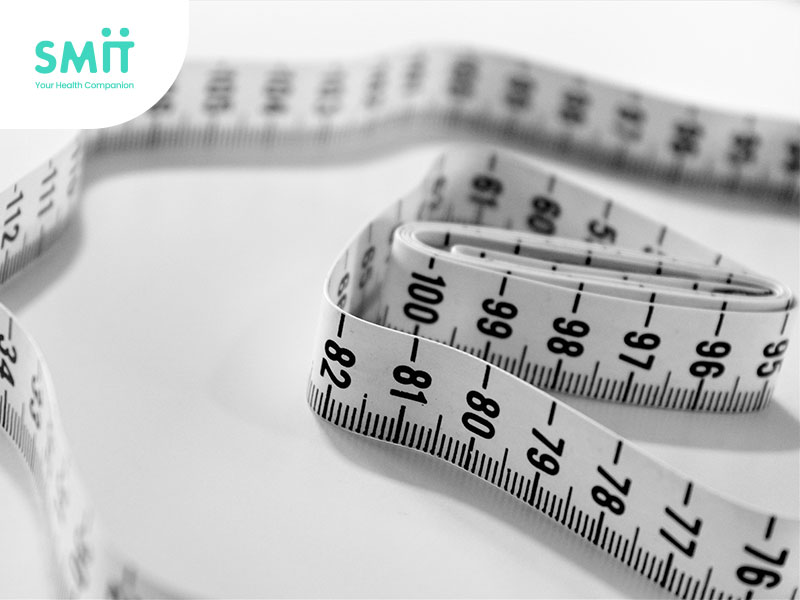Fitness is more of a journey than the destination. Fortunately, in recent years, there have been many new developments to measure and map this fitness journey. As we move deeper and deeper into this technology era, mapping fitness and fitness progress has only become simpler. People are slowly transitioning into routine fitness regime more frequently now than ever – thanks to awareness and technology. One such technology-based fitness app is Smit.Fit, which is a digital health companion in achieving any form of fitness or health goals.
Higher body weight is now known to be a potential risk factor for development of chronic non-communicable diseases like Type 2 Diabetes Mellitus, hypertension, heart ailments, certain types of cancers, hormonal imbalances and others. Since it is a modifiable risk factor, achieving and maintaining a healthy body weight is one of the important measures for preventing lifestyle diseases.
Over the years, there have been numerous techniques that have been researched and developed to assess body fat percentage and overall fitness. Some of the methods like Dual Energy X-Ray Absorptiometry (DEXA) and Bio-impedance Analysis (BIA) are more appropriate for research laboratories and experiments due to their robust nature. Simpler, inexpensive and easy-to-execute measurement tools like Body Mass Index (BMI) – that takes into account the height and weight of the person, waist and hip circumference, Waist-to-Hip Ratio (WHR), and Relative Fat Mass (RFM) are also available.
- Body Mass Index (BMI): It is the measure of weight for a given height. It can be used to rule out obesity and overweight, but it is not a true diagnostic measure of the body fatness or overall health of a person. Although its use has been widespread due to the ease of calculating, it has some loopholes.
- It does not take into account body composition like fat mass, muscle mass etc.
- It does not reflect the true body fat percentage and may wrongly estimate body weight
It is more of a screening tool than a diagnostic tool. There are different BMI cut-off categories available as a reference to predict the risk for metabolic diseases. Recently, ethnicity-specific have been developed based on evidence that people of different ethnic and cultural backgrounds have different body composition, hence different cut off ranges. Check this BMI calculator tool to know which BMI category you fall into.
- Relative Fat Mass (RFM): This measuring tool came into existence due to its simplicity of usage. It was developed as an alternative technique to measure body fat percentage without having the need to use expensive techniques like DEXA or BIA. Only two commonly used anthropometric measurements – height and waist circumference measurements are required in estimating the RFM of a person. It is considered to be more effective and sensitive to estimate body fat percentage as compared to BMI.
- Other ways to measure fitness progress: Having said that, BMI and RFM are some of the tools available to measure health and overall body fitness. There are other ways to track your fitness progress. Some of them are listed below:
- Weighing scale: A weighing scale can be used to measure weight, but it will never tell you the true story of your body’s muscle or fat mass. For example, an athlete will have a higher muscle mass and still weigh the same like an overweight individual. These two people might be classified as ‘overweight’ as per the BMI categories, but have completely different fitness levels.
- Your clothes size: One of the happiest feelings is to be able to slide into an old, favourite pair of denim jeans that you probably never thought you could! Observing how the clothes fit you, being able to fit into older clothes, and coming down a size, helps us to know that there is some progress in terms of fitness and that you are on your path to shedding those extra inches (which, by the way, is fat loss!).
- Energy levels: Observing energy levels, stamina and overall exercise performance will also help you to understand how far you have come in your fitness journey.
- Photographs: Taking a photograph of oneself before starting any form of fitness journey, and capturing the fitness regime might reveal some noticeable changes in the body (are the love handles still visible?)
- Body measurements: Body measurements, starting from the head down to the toes can be another tool to track fitness. Take measurements of the neck, shoulders, chest, arm, waist, hip, thighs, and calves, and compare them with previous measurements to help you to know the difference in terms of muscle gained, or fat that has been lost during your fitness journey.
- Other tests: Some of the other tests that can guide us on the fitness front are checking heart rate, push-up test, sit-up test, running or jogging test, and sit-and-reach test to assess flexibility.
Fitness awareness and tracking has gained a lot of momentum in the recent years. These days, a lot of smart phones, smart watches, and fitness bands have multiple features to track fitness apart from the conventional laboratory methods. BMI, RFM and body measurements still remain the conventional and standard tools to measure and assess fitness progress. Do check our video library for some exercises to improve your fitness. You can also download the app to have access to these videos at the convenience of your device and join the journey towards good health.



0 Comments